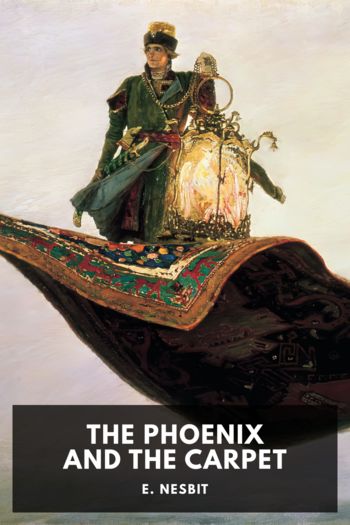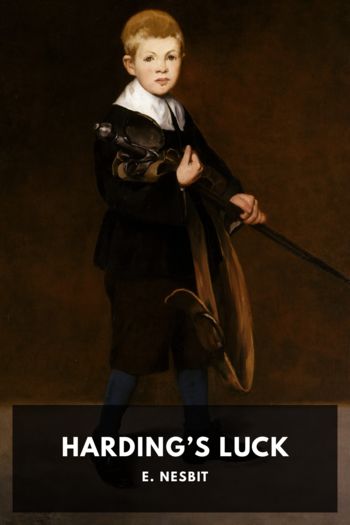Five Children and It by E. Nesbit (classic books for 12 year olds .TXT) 📕

Description
Initially published in The Strand Magazine, which explains its episodic nature, Five Children and It was later collected into a book. Like many of E. Nesbit’s works, it has proven popular with children and adults to this day. It has been adapted into a TV series, a musical, a film, and even an anime series.
In this story, five siblings encounter an ancient magical creature in a gravel pit. The Psammead, as it calls itself, grants each of them a wish per day, with the restriction that it ends at sunset. As expected, all of the children’s wishes go comically wrong, and it’s up to them to solve the problems they created.
E. Nesbit’s enduring popularity is due in large part to the way she addresses children. Like Lewis Carrol and Kenneth Grahame, she engages children seriously, tapping into their imagination without any condescension. C. S. Lewis admired her, and the grumpy (but kind) sand-sorcerer Psamathos in Roverandom, a story J. R. R. Tolkien wrote for his own children, bears a striking resemblance to the Psammead—indeed, an early version of the story featured the creature itself!
Read free book «Five Children and It by E. Nesbit (classic books for 12 year olds .TXT) 📕» - read online or download for free at americanlibrarybooks.com
- Author: E. Nesbit
Read book online «Five Children and It by E. Nesbit (classic books for 12 year olds .TXT) 📕». Author - E. Nesbit
“Well,” said Anthea, still kindly, “perhaps if we knew who you are in particular we could think of something to say that wouldn’t make you cross. Everything we’ve said so far seems to have. Who are you? And don’t get angry! Because really we don’t know.”
“You don’t know?” it said. “Well, I knew the world had changed—but—well, really—Do you mean to tell me seriously you don’t know a Psammead when you see one?”
“A Sammyadd? That’s Greek to me.”
“So it is to everyone,” said the creature sharply. “Well, in plain English, then, a Sand-fairy. Don’t you know a Sand-fairy when you see one?”
It looked so grieved and hurt that Jane hastened to say, “Of course I see you are, now. It’s quite plain now one comes to look at you.”
“You came to look at me, several sentences ago,” it said crossly, beginning to curl up again in the sand.
“Oh—don’t go away again! Do talk some more,” Robert cried. “I didn’t know you were a Sand-fairy, but I knew directly I saw you that you were much the wonderfullest thing I’d ever seen.”
The Sand-fairy seemed a shade less disagreeable after this.
“It isn’t talking I mind,” it said, “as long as you’re reasonably civil. But I’m not going to make polite conversation for you. If you talk nicely to me, perhaps I’ll answer you, and perhaps I won’t. Now say something.”
Of course no one could think of anything to say, but at last Robert thought of “How long have you lived here?” and he said it at once.
“Oh, ages—several thousand years,” replied the Psammead.
“Tell us all about it. Do.”
“It’s all in books.”
“You aren’t!” Jane said. “Oh, tell us everything you can about yourself! We don’t know anything about you, and you are so nice.”
The Sand-fairy smoothed his long ratlike whiskers and smiled between them.
“Do please tell!” said the children all together.
It is wonderful how quickly you get used to things, even the most astonishing. Five minutes before, the children had had no more idea than you that there was such a thing as a sand-fairy in the world, and now they were talking to it as though they had known it all their lives.
It drew its eyes in and said—
“How very sunny it is—quite like old times. Where do you get your Megatheriums from now?”
“What?” said the children all at once. It is very difficult always to remember that “what” is not polite, especially in moments of surprise or agitation.
“Are Pterodactyls plentiful now?” the Sand-fairy went on.
The children were unable to reply.
“What do you have for breakfast?” the Fairy said impatiently, “and who gives it you?”
“Eggs and bacon, and bread and milk, and porridge and things. Mother gives it us. What are Mega-what’s-its-names and Ptero-what-do-you-call-thems? And does anyone have them for breakfast?”
“Why, almost everyone had Pterodactyl for breakfast in my time! Pterodactyls were something like crocodiles and something like birds—I believe they were very good grilled. You see it was like this: of course there were heaps of sand-fairies then, and in the morning early you went out and hunted for them, and when you’d found one it gave you your wish. People used to send their little boys down to the seashore early in the morning before breakfast to get the day’s wishes, and very often the eldest boy in the family would be told to wish for a Megatherium, ready jointed for cooking. It was as big as an elephant, you see, so there was a good deal of meat on it. And if they wanted fish, the Ichthyosaurus was asked for—he was twenty to forty feet long, so there was plenty of him. And for poultry there was the Plesiosaurus; there were nice pickings on that too. Then the other children could wish for other things. But when people had dinner-parties it was nearly always Megatheriums; and Ichthyosaurus, because his fins were a great delicacy and his tail made soup.”
“There must have been heaps and heaps of cold meat left over,” said Anthea, who meant to be a good housekeeper some day.
“Oh no,” said the Psammead, “that would never have done. Why, of course at sunset what was left over turned into stone. You find the stone bones of the Megatherium and things all over the place even now, they tell me.”
“Who tell you?” asked Cyril; but the Sand-fairy frowned and began to dig very fast with its furry hands.
“Oh, don’t go!” they all cried; “tell us more about it when it was Megatheriums for breakfast! Was the world like this then?”
It stopped digging.
“Not a bit,” it said; “it was nearly all sand where I lived, and coal grew on trees, and the periwinkles were as big as tea-trays—you find them now; they’re turned into stone. We sand-fairies used to live on the seashore, and the children used to come with their little flint-spades and flint-pails and make castles for us to live in. That’s thousands of years ago, but I hear that children still build castles on the sand. It’s difficult to break yourself of a habit.”
“But why did you stop living in the castles?” asked Robert.
“It’s a sad story,” said the Psammead gloomily. “It was because they would build moats to the castles, and the nasty wet bubbling sea used to come in, and of course as soon as a sand-fairy got wet it caught cold, and generally died. And so there got to be fewer and fewer, and, whenever you found a fairy and had a wish, you used to wish for a Megatherium, and eat twice as much as you wanted, because it might be weeks before you got another wish.”
“And did you get wet?” Robert inquired.
The Sand-fairy shuddered. “Only once,” it said; “the end of the twelfth hair of my top left whisker—I feel the place still in damp weather. It was only once, but it was quite enough for me. I went away as soon as





Comments (0)